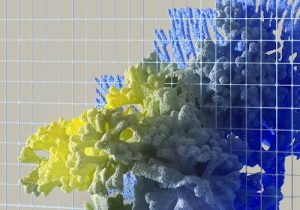Smart Dust: Invisible Sensors Revolutionizing IoT
In today’s connected world, the Internet of Things (IoT) is a rapidly growing industry. From smart homes to industrial applications, the IoT has the potential to transform the way we live and work. However, there is one technology that is taking the IoT revolution to the next level – Smart Dust.
Invisible, wireless sensors – that’s what Smart Dust is all about. These tiny, self-sustaining devices have the power to collect, analyze and transmit data from their surroundings. With their miniature size and low cost, they are set to revolutionize the way we interact with the world around us.
Smart Dust technology is still in its early stages, but its potential is immense. In this article, we will take a closer look at what Smart Dust is and how it is transforming the IoT landscape.
The Basics of Smart Dust
Smart Dust, also known as microelectromechanical systems (MEMS), is a network of tiny sensors equipped with computing and communication capabilities. These sensors are typically the size of a grain of sand and are capable of monitoring temperature, air quality, vibration, and many other environmental factors.
The technology behind Smart Dust is not new, it has been around for decades. However, it is only in recent years that advancements in microelectronics and wireless communication have made it possible to mass-produce these tiny sensors at a low cost. This has opened up a whole new realm of possibilities for the IoT industry.
The Power of Smart Dust
The biggest advantage of Smart Dust is its size. These tiny sensors can be deployed in large quantities and in hard-to-reach areas without being noticed. This makes them ideal for monitoring and collecting data from various environments, such as industrial sites, agriculture fields, and even human bodies.
The data collected by Smart Dust sensors can be instantly transmitted to a central hub for analysis and decision-making. This real-time monitoring and analysis can enable businesses to optimize their processes, reduce costs, and improve efficiency. For example, in an industrial setting, Smart Dust sensors can detect changes in temperature, humidity, and vibration, allowing machines to be maintained before they break down, saving companies time and money.
Smart Dust can also have a huge impact on healthcare. These tiny sensors can be used to monitor patients’ vital signs in real-time, providing doctors with valuable data to make accurate diagnoses and manage chronic conditions.
The Future of Smart Dust and IoT
The potential applications of Smart Dust are endless. As technology continues to evolve, these tiny sensors are expected to become even more intelligent and efficient. With the rise of artificial intelligence and machine learning, Smart Dust will play a crucial role in creating fully automated systems, making the IoT even more powerful.
One of the biggest challenges for Smart Dust and IoT is security. With a large number of sensors collecting and transmitting data, there is a risk of data privacy breaches. Therefore, it is essential to implement robust security measures to protect the data collected by Smart Dust sensors.
In conclusion, Smart Dust is a game-changing technology that is revolutionizing the IoT industry. With its ability to collect and transmit data in real-time, it has the potential to transform businesses, industries, and our daily lives. As technology continues to advance, we can only imagine the possibilities that Smart Dust will bring to the table. It’s time to embrace this tiny yet powerful technology and reap its benefits.








